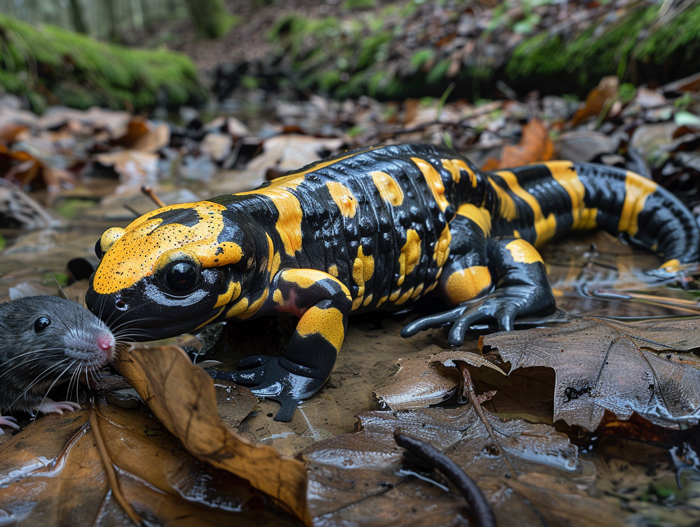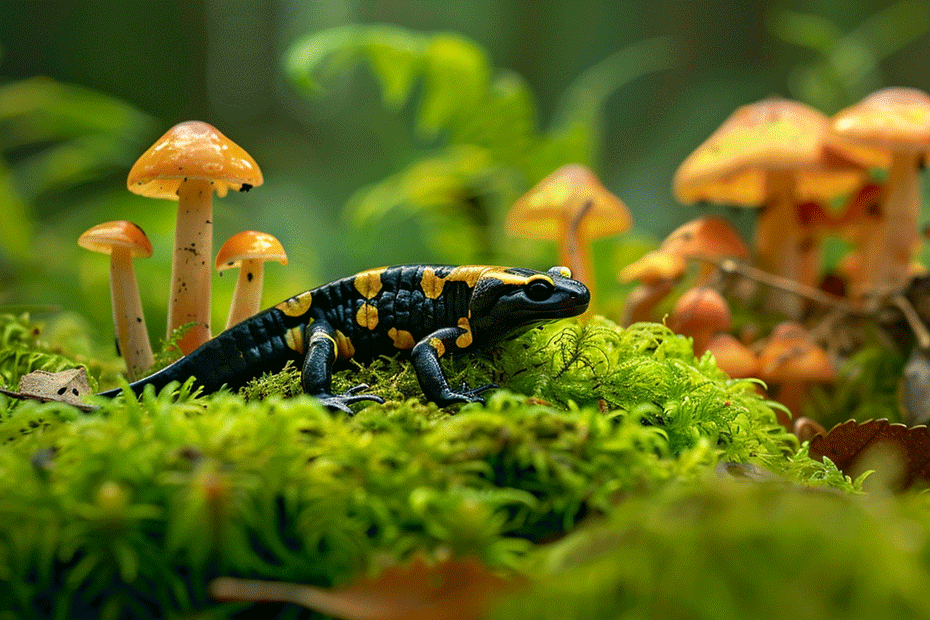Are you curious about what salamanders eat? These fascinating creatures have a diverse diet that varies depending on their species and habitat. From insects and worms to small fish and even other salamanders, these amphibians are opportunistic feeders.
Salamanders play a crucial role in maintaining the balance of their ecosystems by controlling insect populations and serving as a food source for larger predators. Understanding their dietary preferences can provide valuable insights into their behavior and habitat requirements.
Key Takeaways
- Salamanders have a diverse diet that includes insects, worms, small fish, and even other salamanders, varying based on species and habitat.
- They play a crucial role in ecosystem balance by controlling insect populations and serving as a food source for larger predators.
- Different species of salamanders have varying dietary preferences, with terrestrial ones mainly feeding on insects and aquatic ones consuming small fish and aquatic invertebrates.
- Understanding salamanders’ dietary habits is essential for conservation efforts and preserving their habitats.
- Factors like habitat and seasonal changes influence salamanders’ diet, with variations in prey consumption based on environmental conditions.
Overview of Salamanders’ Diet
Salamanders have a diverse diet that plays a crucial role in maintaining ecosystem balance. Understanding what salamanders eat is fundamental to grasping their behavior and habitat requirements.

What Do Salamanders Eat?
- Salamanders are predators, preying on a variety of creatures in their habitat.
- Their diet comprises insects, worms, small fish, and even other salamanders.
- They play a vital role in the ecosystem by controlling insect populations and providing a food source for larger predators.
- Different species of salamanders have varying dietary preferences.
Dietary Preferences
- Terrestrial salamanders: Feed mainly on insects like beetles and ants.
- Aquatic salamanders: Consume small fish, tadpoles, and aquatic invertebrates.
- Larger species: May prey on smaller salamanders or even amphibians.
Importance in the Ecosystem
- Salamanders help regulate insect populations, preventing outbreaks.
- They serve as a crucial food source for birds, snakes, and mammals.
- Understanding their diet can aid in conservation efforts to protect their habitats.
- By delving into the diet of salamanders, we can unravel the intricate ecosystem dynamics they influence.
- Appreciating the role of these fascinating creatures in nature enables us to better preserve their environments.
Remember, salamanders’ dietary habits are not just a matter of survival but an essential component of the intricate web of life in their ecosystems.
Types of Food Salamanders Eat

Insects:
- Salamanders are known to have a voracious appetite for Insects such as ants, beetles, and termites.
- These creatures are crucial in controlling insect populations in their habitats.
Worms:
- Salamanders also feast on earthworms and other worm species found in damp environments.
- Worms offer a nutrient-rich meal for salamanders aiding in their growth and reproduction.
- Some salamander species, particularly aquatic ones, prey on Small Fish like minnows and tadpoles.
- Feeding on Small Fish provides salamanders with necessary protein and sustenance.
Remember, the diet of salamanders is vital for ecosystem balance and understanding their feeding habits aids in conservation efforts.
Factors Affecting Salamanders’ Diet

Habitat
- Salamanders’ diet varies based on their Habitat.
- Terrestrial salamanders feast on small invertebrates like insects and earthworms.
- Aquatic species consume small fish, tadpoles, and aquatic invertebrates for their nutritional needs.
- Seasonal changes influence salamanders’ diet.
- In warmer months, they may consume more insects due to increased activity.
- Cooler seasons may lead to a shift towards earthworms or other available prey.
Next, you’ll explore how factors like Habitat and Season play crucial roles in shaping salamanders’ dietary preferences.
Conclusion
Salamanders have a diverse diet influenced by factors like habitat and seasonal changes. Terrestrial species feast on insects and earthworms, while aquatic salamanders rely on small fish and aquatic invertebrates. Seasonal variations affect their food choices, with warmer months bringing more insects and cooler seasons leading to a shift towards earthworms. Understanding these dietary preferences is crucial for ecosystem balance and conservation.

Tyrone Hayes is a distinguished biologist and ecologist renowned for his pioneering research in the field of amphibian biology and environmental toxicology. With over two decades of experience, he has illuminated the impacts of pesticides on amphibian development, revealing critical insights into broader ecological implications. Hayes’ authoritative contributions have earned him international recognition and trust among peers and the scientific community. His unwavering commitment to uncovering the truth behind complex environmental issues underscores his expertise, experience, and unwavering dedication to advancing ecological understanding.
